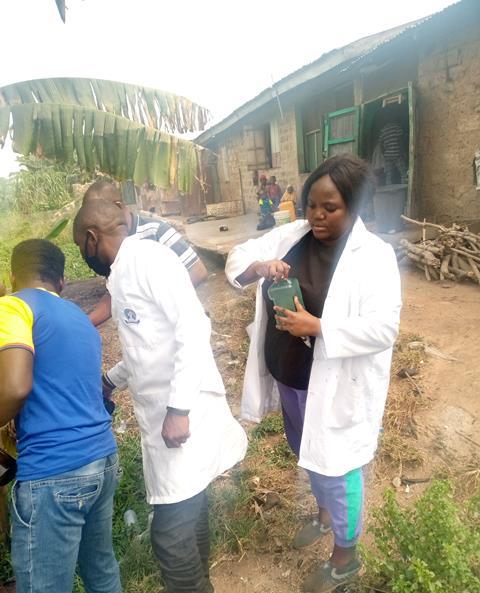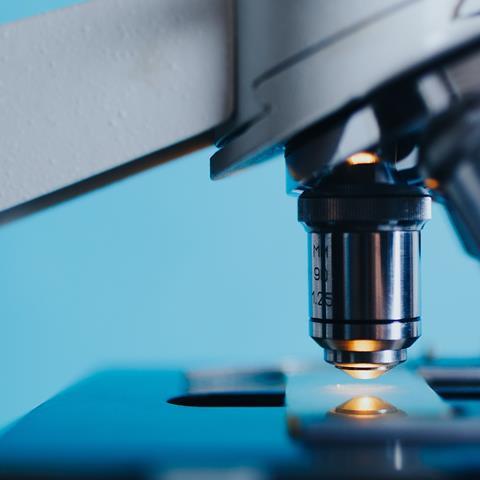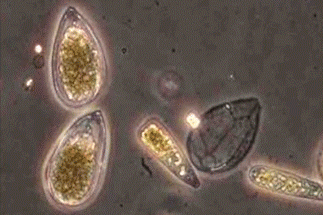My journey began in 2020 as a PhD student in Environmental Microbiology at Redeemer’s University, and I’ve since been immersed in the fascinating world of microbiological research. My work at the African Centre for Water and Environmental Research (ACEWATER) presents a variety of challenges and rewards as I explore the critical issues surrounding water quality and public health. Through this article, I hope to share a glimpse into my daily routine and the vital work we do at ACEWATER.
A Typical Day at ACEWATER
A typical day at ACEWATER is anything but mundane. Each morning, I arrive at the lab prepared to face the dynamic environment of microbiological research. The first task often involves organizing and reviewing samples that have arrived from scholars and research centers across Nigeria. These samples, which include water, air, environmental specimens, and even urine samples, are critical for our ongoing projects. Our focus is to detect pathogens and chemical contaminants that pose risks to public health.
Challenges in the Lab
The volume of samples can be overwhelming, especially during health crises. For instance, during the recent cholera outbreak in Nigeria, we faced an increased demand for analysis. This surge reinforced the importance of our work and the need for accuracy in our testing procedures. Knowing that our findings could impact public health keeps our team motivated.
Handling a high volume of samples also presents technical challenges. Our laboratory equipment is specialized and requires careful calibration. Key pathogens we frequently analyze include Escherichia coli (E. coli), Salmonella spp., Pseudomonas aeruginosa and Vibrio cholerae. Additionally, we often encounter chemical contaminants like heavy metals (lead, arsenic), personal care products (PCPs) and pesticides in environmental samples, which are essential to assess given the implications for human health and the environment.

Skills and Techniques
Throughout my time at ACEWATER, I have honed my skills in various laboratory techniques, Cultural characterization is a crucial part of my work in pathogen identification. This process involves isolating and growing microorganisms from environmental samples using selective media. For example, we culture Escherichia coli (E. coli) from water samples on MacConkey agar, which helps differentiate lactose fermenters. We also isolate Salmonella spp. using XLD (Xylose Lysine Deoxycholate) agar to identify biochemical properties. Additionally, Vibrio cholerae is isolated from cholera outbreak samples using alkaline peptone water for enrichment and TCBS (thiosulfate-citrate-bile salts-sucrose) agar for isolation.
These techniques enhance identification accuracy and provide valuable insights into the pathogenic potential of the isolated strains, including Polymerase Chain Reaction (PCR) and quantitative PCR (qPCR). These methods are indispensable for amplifying and quantifying DNA from microbial samples, enabling us to quickly and accurately identify pathogens. One notable technique I utilize is Solid Phase Extraction (SPE) and high-performance liquid chromatography (HPLC), which allows us to extract and quantify antibiotics from drinking water and urine samples. This is particularly relevant in our ongoing research on antibiotic resistance, which is a pressing global health concern. By measuring the levels of chemical contaminants such as antibiotics in these samples, we can gauge contamination levels and develop strategies to mitigate risks.
The Role of Technology
Technology plays a significant role in enhancing our capabilities in the lab, especially in biological detection. Techniques like Polymerase Chain Reaction (PCR) and quantitative PCR (qPCR) are indispensable for amplifying and quantifying DNA from microbial samples, enabling rapid and accurate identification of pathogens. Additionally, our advanced equipment, including high-performance liquid chromatography (HPLC) and liquid chromatography-mass spectrometry (LCMS), is vital for detecting and quantifying microbial contaminants and chemical residues in samples.
Despite these advancements, we encounter several challenges in utilizing these technologies. One key limitation is the complexity of PCR and qPCR, which requires meticulous optimization to ensure accurate results. Furthermore, our laboratory equipment demands regular calibration and maintenance, which can be time-consuming and require technical expertise. From a biological standpoint, the sheer variety of pathogens and contaminants we work with adds an extra layer of complexity, as different microorganisms may necessitate unique detection methods. Additionally, while we have access to valuable tools, there is a pressing need for a more integrated laboratory information management system (LIMS) to effectively track samples and data. An advanced LIMS would help reduce errors and enhance communication among team members, ultimately improving our efficiency in addressing the urgent challenges posed by microbial contamination and public health threats.
Looking Ahead
As I look to the future, I recognize several challenges awaiting our laboratory. The increasing focus on environmental sustainability necessitates rigorous testing of water sources and ongoing public health monitoring. Our team must adapt to evolving regulations and expand our capabilities to address emerging pathogens and persistent antibiotic resistance.
These challenges, however, also present key opportunities. The rising demand for clean water and a healthy environment positions microbiologists at the forefront of research and development. Collaboration with other researchers and organizations will be essential. We can employ interdisciplinary approaches to tackle complex problems, share knowledge, and create innovative solutions.
Conclusion
My experience as a microbiologist at ACEWATER has been a rewarding blend of challenges and learning opportunities. Each day offers new prospects to grow and make a tangible impact in the field of environmental microbiology. I look forward to contributing to the CLINICAL24 campaign, highlighting not only the hurdles we face but also the technology solutions that enable us to overcome them. By sharing our stories, we can underscore the importance of our work and inspire future generations of scientists committed to enhancing public health and environmental safety.








No comments yet